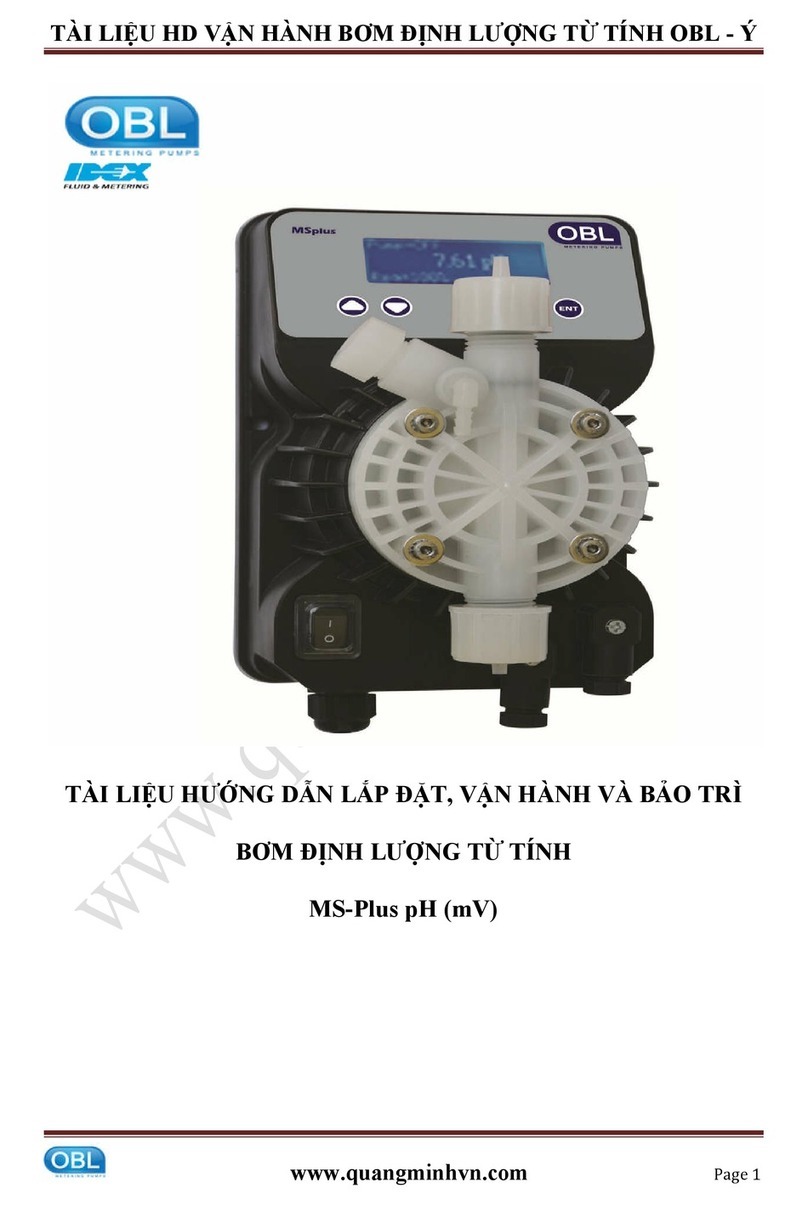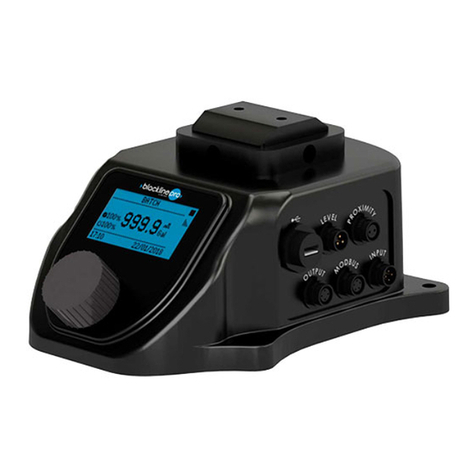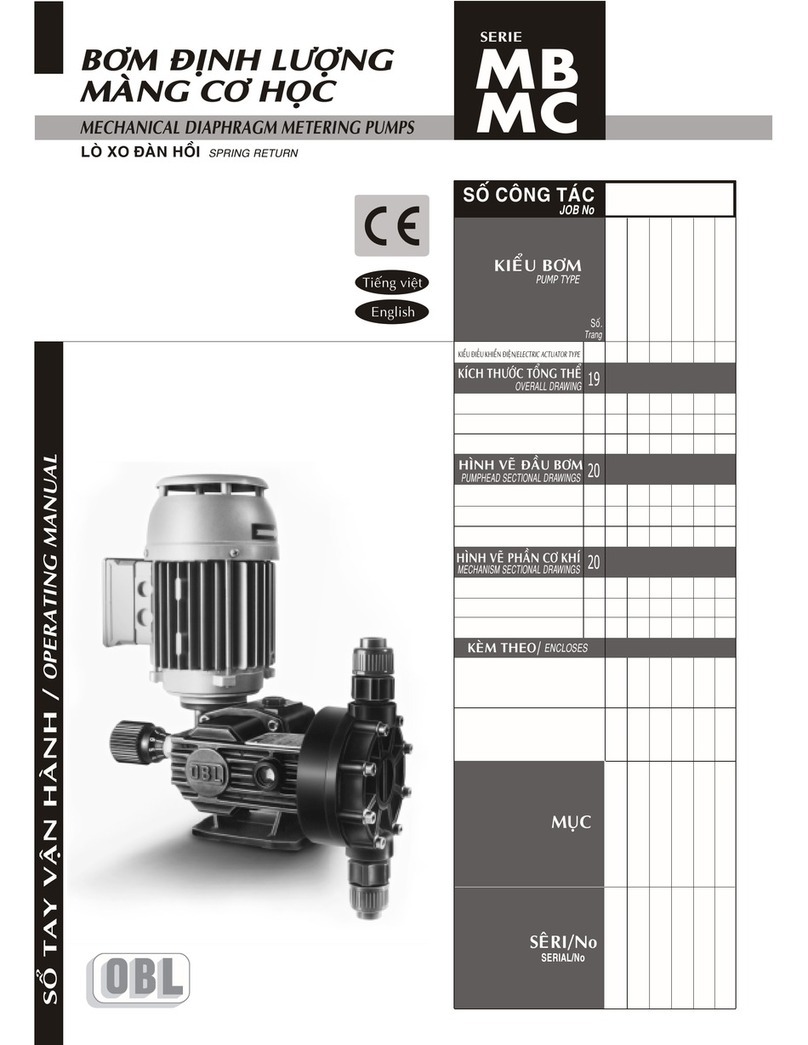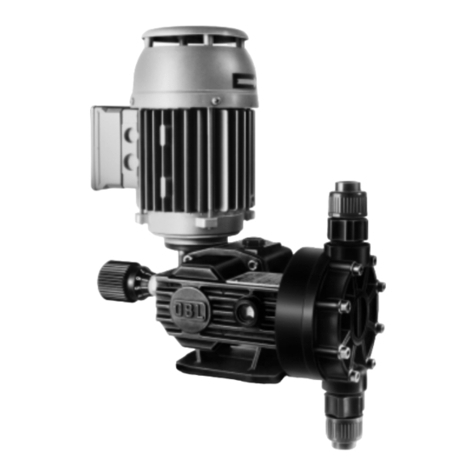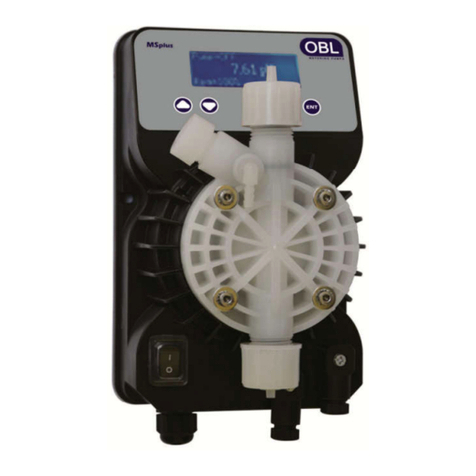
Operating manual X9 Series metering pumps
File: UT-4336 – Rev.0 Copyright © - OBL Metering pumps - All rights reserved Page 3
GB
6.3.2
Pulsation dampener ........................................................................................................................ 20
6.3.3
Pressure gauge .............................................................................................................................. 21
6.3.4
Cali ration pot ............................................................................................................................... 21
6.4
EXAMPLE OF PLANT FOR METERING PUMPS ............................................................................................. 21
6.5
ELECTRIC MOTOR INSTALLATION ............................................................................................................ 22
6.5.1
Flexi le joint coupling ..................................................................................................................... 22
6.5.2
Check and change the direction of rotation ....................................................................................... 22
6.6
DESIGN DATA CHECK .............................................................................................................................. 22
6.6.1
Environmental conditions ................................................................................................................ 22
6.6.2
Installation conditions ..................................................................................................................... 22
6.7
START-UP .............................................................................................................................................. 22
6.7.1
Checks efore start-up .................................................................................................................... 22
6.7.2
Checks during operation ................................................................................................................. 23
6.7.3
A normal conditions ....................................................................................................................... 23
6.7.4
Prolonged stops ............................................................................................................................. 23
7.
ROUTINE MAINTENANCE ......................................................................................................................... 23
7.1
OPERATING PRECAUTIONS ..................................................................................................................... 23
7.2
CONSULTING TECHNICAL DOCUMENTATION ............................................................................................ 24
7.3
PERIODIC OPERATIONS .......................................................................................................................... 24
7.3.1
Checks of normal operation ............................................................................................................. 24
7.3.2
Checks of electrical connections ....................................................................................................... 24
7.3.3
Checks of pump connection to plant pipeline .................................................................................... 24
7.3.4
General and surface cleaning........................................................................................................... 24
7.3.5
Protection against corrosion ............................................................................................................ 24
7.3.6
Verification of thermal protections ................................................................................................... 25
7.3.7
Painting check (if foreseen) ............................................................................................................. 25
7.3.8
Lu ricant oil check.......................................................................................................................... 25
7.3.9
Hydraulic oil system check .............................................................................................................. 25
7.4
RECOMMENDED SPARE PARTS ................................................................................................................. 25
7.4.1
Pumps with PLASTIC material pumphead ......................................................................................... 25
7.4.2
Pumps with METALLIC material pumphead ....................................................................................... 25
7.5
DISMANTLING, REPLACEMENT AND REASSEMBLY ..................................................................................... 25
7.5.1
Personnel qualifications - Customer service ....................................................................................... 26
7.5.2
Disconnecting electrical connections................................................................................................. 26
7.6
VALVE VERIFY AND/OR REPLACEMENT ..................................................................................................... 26
7.6.1
Pumps type LY, LYH ....................................................................................................................... 26
7.6.2
Pumps type LK, LN, LP .................................................................................................................... 27
7.7
LUBRICANT OIL CHANGE ......................................................................................................................... 27
8.
SPECIAL MAINTENANCE .......................................................................................................................... 28
8.1
TECHNICAL DOCUMENTATION................................................................................................................. 28
8.2
HYDRAULIC SYSTEM MAINTENANCE ........................................................................................................ 28
8.2.1
Hydraulic oil system change ............................................................................................................ 29
8.2.2
Diaphragm rupture signaling ........................................................................................................... 29
8.2.3
Diaphragm condition check ............................................................................................................. 29
8.2.4
Diaphragm replacement .................................................................................................................. 29
8.2.5
Hydraulic system oil filling ............................................................................................................... 31
8.2.6
Pumphead tightening torque values ................................................................................................. 33
8.2.7
Pumps with plastic material pumphead: Recommendations ................................................................ 33
8.3
DIAPHRAGM RUPTURE DETECTOR RESETTING ......................................................................................... 34
8.4
PUMPS TYPE LN, LP: KNOB ADJUSTMENT FRICTION SETTING ................................................................... 34
8.4.1
Increase the adjustment friction ...................................................................................................... 34
8.4.2
Reduce the adjustment friction ........................................................................................................ 34
8.5
BEARINGS REPLACEMENT ....................................................................................................................... 35
8.5.1
Reassem ling................................................................................................................................. 35
8.6
CHANGE OF INTERNAL SAFETY VALVE SET PRESSURE .............................................................................. 35
9.
OTHER INFORMATION ............................................................................................................................. 36
9.1
FAULTS AND OPERATING PROBLEMS ....................................................................................................... 36
9.1.1
Flowrate lower than expected .......................................................................................................... 36
9.1.2
Flow rate irregular or higher than expected ...................................................................................... 36
9.1.3
Overheating of pump ody and/or motor .......................................................................................... 36
9.2
DISCONNECTION FROM THE PLANT AND SENDING TO OBL FOR MAINTENANCE ......................................... 36
9.3
STORAGE FOR LONG PERIODS ................................................................................................................ 36
9.4
DISPOSAL AND DEMOLITION................................................................................................................... 36
1 .
MANDATORY INSTRUCTION FOR RETURNING GOOD IN OBL ............................................................... 37


















